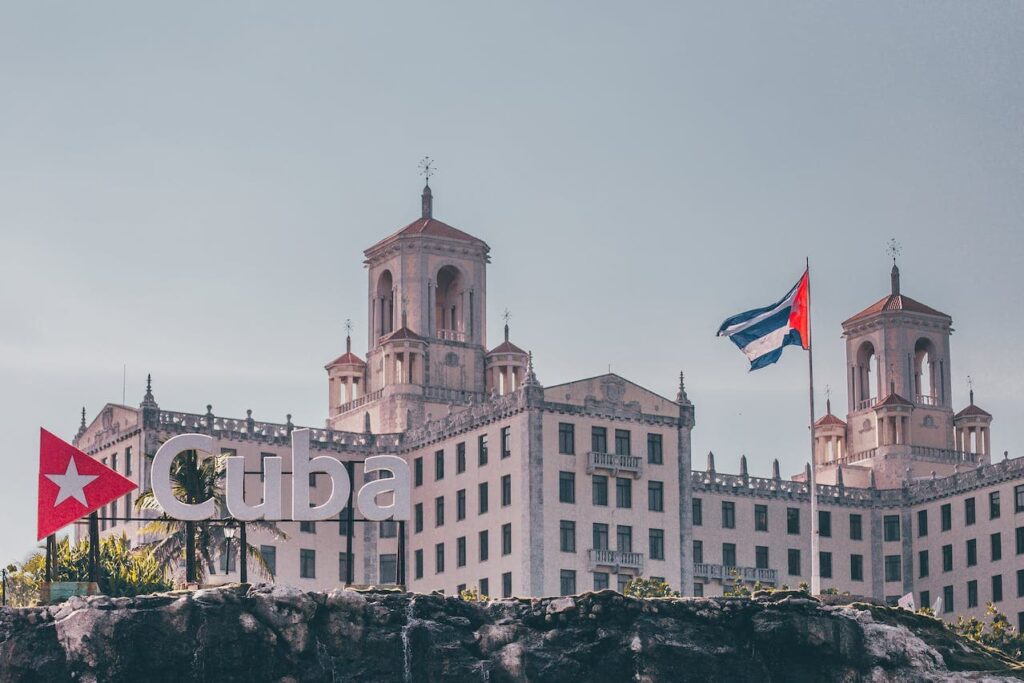Cuba
What Language Does Cuba Speak?
What Language Does Cuba Speak? The official language of Cuba is Spanish. Cuban Spanish is a variety of Caribbean Spanish that is spoken by over 11 million people on the island.
It is characterized by a soft, somewhat nasal accent and rhythmic intonation. Cuban Spanish has also been influenced by other languages, such as African languages, Chinese, and Haitian Creole.
Other languages spoken in Cuba include:
Haitian Creole:
The Haitian Creole is the second most spoken language in Cuba and is spoken by Haitian immigrants and their descendants.
Haitian Creole is a French-based Creole language spoken by over 10 million people in Haiti, where it is the official language, and by Haitian diaspora communities around the world.
It is also spoken by a minority of people in the Dominican Republic, the Bahamas, and other Caribbean islands.
Haitian Creole developed in the 17th and 18th centuries from a contact language between French settlers and enslaved Africans. It is based on French grammar and vocabulary, but it has also been influenced by African languages, such as Wolof, Fon, and Ewe.
Haitian Creole is a very diverse language, with regional variations in pronunciation, vocabulary, and grammar. However, all Haitian Creole speakers can understand each other.
Haitian Creole is a very expressive language, and it is used in all aspects of Haitian life, including the home, the workplace, the government, and the media. It is also used in Haitian music, literature, and film.
Here are some key features of Haitian Creole:
- It is a tonal language, meaning that the meaning of a word can change depending on its tone.
- It has a simple grammar, with no verb conjugations or declensions.
- It has a rich vocabulary, which includes words from French, African languages, and other languages spoken in the Caribbean.
- It is a very expressive language, with a wide range of slang words and phrases.
Haitian Creole is an important part of Haitian culture and identity. It is a language that is spoken with pride by Haitians all over the world.
Here are some examples of Haitian Creole words and phrases:
- Bonjour: Hello
- Mesi: Thank you
- Silvouple: Please
- Kouman ou ye: How are you?
- Mwen byen, mèsi: I’m good, thanks.
- Ki jan sa ye: How’s it going?
- Sa komanse: It’s going well.
- Mwen renmen ou: I love you.
- Bonjou Ayiti: Good morning, Haiti!
Lucumi:
Lucumi is a dialect of the West African language Yoruba and is used for religious purposes by practitioners of the Santeria religion.
The Lucumí language, also known as Anagó, is a liturgical language used in the Santería religion, which is a syncretic religion that combines elements of Catholicism and Yoruba, a West African religion.
Lucumí is based on the Yoruba language, but it has also been influenced by Spanish and other languages spoken in Cuba.
The Lucumí is used in Santería rituals, songs, and prayers. It is also used to communicate with the orishas, which are the spirits that are worshipped in Santería.
Lucumí is a very complex language, with a rich vocabulary and grammar. It is also a very poetic language, and it is often used in Santería songs and prayers to express deep emotions and spiritual insights.
Here are some key features of Lucumí:
- It is a tonal language, meaning that the meaning of a word can change depending on its tone.
- It has a complex grammar, with verb conjugations and noun declensions.
- It has a rich vocabulary, which includes words from Yoruba, Spanish, and other languages spoken in Cuba.
- It is a very poetic language, with a wide range of figurative language and imagery.
Lucumí is an important part of the Santería religion and culture. It is a language that is used to communicate with the Orishas and to express deep spiritual insights.
Here are some examples of Lucumí words and phrases:
- Olodumare: God
- Olofi: The supreme orisha
- Orishas: Spirits that are worshipped in Santería
- Babalawos: Santería priests
- Iyalochas: Santería priestesses
- Ache: Spiritual energy
- Ashe: A greeting that means “May you have spiritual energy!”
- Maferefun: A greeting that means “I give thanks!”
Galician:
The Galician is spoken by a small number of immigrants from Spain.
Galician is a Romance language spoken by about 2.4 million people in Galicia, a region in northwestern Spain. It is also spoken by a minority of people in Cuba, where it is estimated that there are around 50,000 Galician speakers.
The Galician was brought to Cuba by Galician immigrants in the 19th and early 20th centuries. Galician immigrants played an important role in the development of Cuba, and they helped to shape Cuban culture.
Galician is spoken in several different communities in Cuba, including Havana, Cienfuegos, and Santiago de Cuba. There are also several Galician cultural associations in Cuba, which help to promote the Galician language and culture.
Galician is a living language in Cuba, and it is used in all aspects of life, including the home, the workplace, and the community.
There are also several Galician-language newspapers and magazines published in Cuba, and there are several Galician-language radio and television programs broadcast in Cuba.
Galician is an important part of the Cuban cultural heritage, and it is a language that is spoken with pride by Galician Cubans.
Here are some examples of Galician words and phrases:
- Ola: Hello
- Grazas: Thank you
- Por favor: Please
- Como estas: How are you?
- Estou ben, gracias: I’m good, thanks.
- Que tal: How’s it going?
- Vai Ben: It’s going well.
- Querote: I love you.
- Bo día, Galicia: Good morning, Galicia!
Corsican:
Corsican is spoken by a small number of immigrants from the French island of Corsica.
The Corsican is a Romance language spoken by about 300,000 people on the island of Corsica, which is a French territory located in the Mediterranean Sea.
Corsican is also spoken by a minority of people in France, Italy, and other countries around the world.
Corsican is a unique language that has been influenced by a variety of languages, including Italian, French, and Ligurian. The Corsican has a rich vocabulary and grammar, and it is a very expressive language.
It is used in all aspects of life in Corsica, including the home, the workplace, and the government. It is also used in Corsican music, literature, and film.
Corsican is an important part of Corsican culture and identity. It is a language that is spoken with pride by Corsicans all over the world.
Here are some key features of Corsican:
- It is a tonal language, meaning that the meaning of a word can change depending on its tone.
- It has a complex grammar, with verb conjugations and noun declensions.
- It has a rich vocabulary, which includes words from Italian, French, Ligurian, and other languages.
- It is a very expressive language, with a wide range of figurative language and imagery.
Here are some examples of Corsican words and phrases:
- Bonghjornu: Hello
- Grazie: Thank you
- Per page: Please
- Cumu stai: How are you?
- Sto be, Grazie: I’m good, thanks.
- Cumu sta a cosa: How’s it going?
- Andemu bene: It’s going well.
- T amu: I love you.
- Viva Corsica: Long live Corsica!
Corsican is a beautiful and unique language that is worth learning. It is a language that is full of history, culture, and passion.
Cuban Spanish
Cuban Spanish is a vibrant and expressive language that is full of unique words and phrases. Here are a few examples:
- Qué bola!: What’s up?
- Qué chévere!: Cool!
- Qué rico!: That’s delicious!
- Qué onda?: What’s going on?
- Cómo estás?:How are you?
- Estoy bien, gracias: I’m good, thanks.
- Qué tal?: How’s it going?
- Dale!: Let’s go!
- Guay!: Wow!
- No hay problema!:No problem!
- De nada!: You’re welcome!
The history of the Spanish language in Cuba
The Spanish language was brought to Cuba by Spanish colonists in the 16th century. Over time, Cuban Spanish has been influenced by other languages, such as African languages, Chinese, and Haitian Creole.
In the 19th and early 20th centuries, there was a large influx of immigrants from the Canary Islands to Cuba. The Canary Islands are a Spanish archipelago located off the coast of northwest Africa. The Canary Island dialect of Spanish had a significant influence on Cuban Spanish.
The different dialects of Cuban Spanish
There are no major dialects of Cuban Spanish. However, there are some regional variations in pronunciation and vocabulary.
For example, the Cuban Spanish spoken in Havana has a slightly different accent than the Cuban Spanish spoken in Santiago de Cuba.
Cuban Spanish culture
The Spanish language shapes Cuban culture in many ways. For example, Cuban music, literature, and film are all heavily influenced by the Spanish language.
Cubans also use language to express their values and beliefs. For example, the Cuban phrase “Patria o muerte” (Homeland or death) is a rallying cry for Cuban nationalism.
Cubans also use language to create a sense of community and belonging. For example, Cubans often use nicknames and affectionate terms to address each other.
Learning Cuban Spanish
There are many ways to learn Cuban Spanish. You can take a class, use a language learning app, or hire a private tutor.
You can also learn Cuban Spanish by immersing yourself in the language. This means surrounding yourself with Spanish speakers and listening to and speaking Spanish as much as possible.
The Cuban Sign Language
The Cuban Sign Language (CSL) is the primary language of communication for people who are deaf or hard of hearing in Cuba. CSL is a visual language that uses hand shapes, facial expressions, and body language to communicate.
CSL is a relatively new language, having been developed in the early 20th century. However, CSL has quickly become the language of choice for many deaf and hard-of-hearing Cubans.
The role of language in Cuban identity
Language plays a central role in Cuban identity. Spanish is the official language of Cuba, and it is the language of government, education, and the media.
However, Cuban Spanish is a unique variety of Spanish that has been influenced by African languages, Chinese, and Haitian Creole. This unique language reflects the diversity of Cuban culture and history.
Cubans use language to express their values and beliefs. For example, the Cuban phrase “Patria o muerte” (Homeland or death) is a rallying cry for Cuban nationalism.
Cubans also use language to create a sense of community and belonging. For example, Cubans often use nicknames and affectionate terms to address each other.
The impact of globalization on Cuban Spanish
Globalization has had a significant impact on Cuban Spanish. In recent years, there has been an increase in the use of English loanwords in Cuban Spanish.
This is because Cuba is increasingly open to the outside world, and Cubans are more exposed to English through the media and travel.
While the use of English loanwords is increasing, Cuban Spanish remains a vibrant and distinct language. Cubans continue to use their unique vocabulary and expressions, and they take pride in their language.
The Future of Cuban Spanish
The future of Cuban Spanish is uncertain. On the one hand, the language is under threat from the increasing influence of English. And on the other hand, Cubans are proud of their language and they are committed to preserving it.
Cuban Spanish will likely continue to evolve in the years to come. The language will likely incorporate more English loanwords, but it will also retain its unique vocabulary and expressions.
Cuban Spanish will continue to play an important role in Cuban culture and identity.
Personal experiences with the Spanish language in Cuba
Recently I had the opportunity to visit Cuba. I was struck by the beauty of the country and the warmth of the Cuban people. I was also impressed by the richness and vibrancy of the Spanish language in Cuba.
While in Cuba, I learned a few new Spanish words and phrases. Also had some interesting conversations with locals in Spanish. Learned about Cuban history, culture, and everyday life.
I was particularly impressed by the use of language in Cuban music. Cuban music is full of rhythm and passion, and the lyrics are often poetic and meaningful.
Listened to a lot of Cuban music while I was in Cuba, and it helped me to better understand the Cuban culture and people.
Conclusion
Cuba is a linguistically diverse country, with Spanish being the official language and Haitian Creole being the second most spoken language. Other languages spoken in Cuba include Lucumi, Galician, and Corsican.
Cuban Spanish is a vibrant and expressive language with a unique vocabulary and accent.
If you are planning to visit Cuba, it is helpful to learn a few basic Spanish phrases. This will help you to communicate with locals and get around the island more easily.
Recent Posts
- Cuban Sandwich Calories: Everything You Need to Know
- Cuba Cities for Tourists: A Comprehensive Guide
- How Far is Cuba from Florida? A Comprehensive Guide
- Cuba Beaches: A Comprehensive Guide




